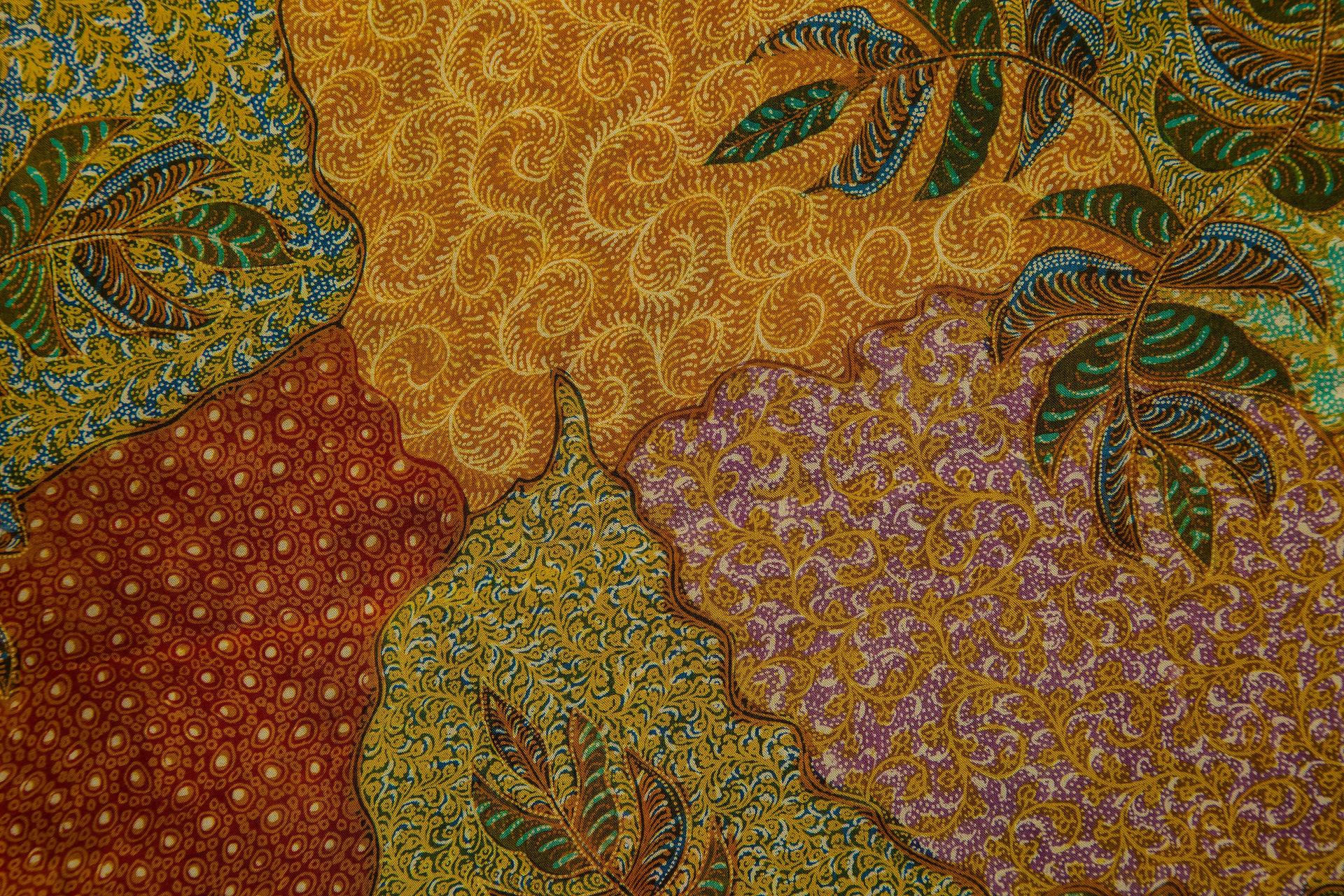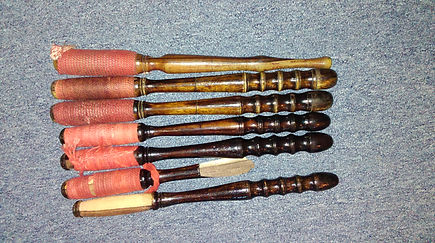

NOTES FROM THE CURATOR
In May 2016 I travelled to Yogyakarta, Central Java to meet with friends, acquaintances and other contacts to record music and make a couple of basic videos as part of my interpretation of textiles I selected from the collection of Kadar and Anton Lucas for the Pola: motif exhibition.
I could have made many of these music tracks in Australia with musicians from the local gamelan community, but given that I was already in the position of being a white Australian curator straying into interpretation of Indonesian cultural material, I felt strongly that the music for the exhibition should be played (and represented) by Indonesian musicians, just as the featured textiles had all been crafted by Indonesian artisans.
I will not go into the process of how I interpreted textile patterns with music here. That is best left for a future curator talk or written paper. And the individual item ‘labels’ already provide many clues as to what I was trying to achieve in making links between visual and music patterns.
But I would like to share a few anecdotes from the recording processes that will enable the listener to make sense of some of the aural and video material encountered on this Pola: motif exhibition website, particularly with regard to artefacts in the sound material.
This project was very grassroots. A small grant was provided to me by Flinders University’s Jembatan initiative, for which I am very grateful. This covered most of a return flight from South Australia as far as Denpasar, Bali. The remainder I retained to remunerate the musicians who played for the recordings.
There was no budget for the video component of the exhibition, and so these videos are as low-fi as one can go. I hired a very basic video camera in Yogyakarta, and one of the musicians doubled as videographer. Opportunistic use was made of existing studios with their resident props and ambience, and lighting was improvised on the spot using what was at hand. As such, the videos are not representative of the quality of videos that can be produced in Indonesia or by those involved.
The videos for this project were not a key feature of my interpretation. I included them primarily to give exhibition visitors a glimpse into some of the faces and personalities playing on the audio tracks. I wanted exhibition visitors to have the briefest taste of the diversity that exists among Indonesian young people and their ethnic and contemporary subcultures.
All of the recordings you find on this website – both video and audio – were made on three separate days, spread over three weeks. Each session went ahead when three key elements could be brought into intersection: (1) enough of the available musicians; (2) the right instruments; and (3) a reasonable space in which to record them. Readers might like to picture a Venn diagram, with three circles (each representing musicians, instruments and space) overlapping in the centre.
I am very grateful to Pak Haryanto and Mas Bowo of the Ethnomusicology Department at the Indonesian Institute of Arts in Yogyakarta (ISI Yogya), who organised us access to a music room to use for the first recording. In order to minimise the sound disruptions, we had to record on a Sunday, the only day the campus is not open for classes (the Indonesian educational system operates from Monday to Saturday). Mas Bowo kindly came in on his only day off to open up the building, retrieve the music instruments of our choice, and wait around until we were done.
We used this building/worked through this department because it is perhaps the only place in Yogya where we could access all of the music instruments we required for certain recordings in one location. We not only needed some large Central Javanese gamelan instruments (for the Floral Meander and Jarik Kawung soundtracks), but also Banyumas calung (for the Nggaong audio) and Batak Toba gongs from North Sumatra (used for the Ostinato of Ogung soundtrack).
The day came when everything was seemingly in place: the three circles of the Venn diagram had come together. By some stroke of luck, everyone scheduled to play for planned recordings had made it to campus just before the rain came in. We could get started.
However, when we went to record the Floral Meander track, we encountered an unforeseen hitch. A rather hostile selection of bonang (gong chime) mallets:
Having taken many classes in this department on campus before, probably I should have foreseen this. The instruments and mallets in the student rehearsal spaces lead hard working lives! The mallets available for signing out to students were not those used for formal campus performances.
Unfortunately, by now it was raining kucing and anjing (cats and dogs). A last-minute motorbike trip to the vicinity of the Alun Alun Selatan (square south of the Yogya Sultan’s palace), where shops sell new mallets, was going to take too long. And someone was going to get awfully wet in the process of riding there and back.
So we chose the least worst mallet options (we needed four in total), and the musicians got on with the job.
Visitors to the exhibition part of this website may notice that the aural ‘flowers’ of the Floral Meander recording – a beautiful track about ‘the fire of love’ – sound rather blighted. The bonang pitches were affected by the harsh action of threadbare mallets striking them. Furthermore, the racks supporting the bonang pots turned out to be as squeaky as bedsprings in a hotel room with paper-thin walls!
The musicians had played a lovely rendition of the music material for Floral Meander. I only hope listeners are able to focus on the gentle melody and beautiful timbre of the bronze chimes through all the creaking and squeaking.
Reflecting upon this two years on from the original exhibition, I realise that perhaps this recording is just as it should be. The textile it accompanied – which I named Floral Meander – is in fact the one fabric in the exhibition with a number of defects. It has a large tear that has been visibly sewn up, and there are some artefacts of blue dye that must have run during the original craft process.
So it seems fitting that Floral Meander, an imperfect textile, has an imperfect soundtrack.
On the issue of weather, Day 3 of recording was almost completely derailed by unrelenting rain. Perhaps I will share some stories from that day in a future update to this website.
For Day 2 of recording, we had to use an alternative second location. This time, Pak Haryanto kindly allowed us access to his private music studio in his kampung (village). His studio happened to be equipped with some relevant props, which we used in the Leto video. And the musicians brought in their own instruments for these recordings – so no hitches there!
This space was not as sound proof as we thought, however. It was inevitable that the children in the village would come home from school and start to play in the adjacent lane. At least one audio track has been graced with the sound of children’s laughter and chatter.
And then there were the motorbikes … no recording in Indonesian would be complete without their insistent contribution – usually right at the end of a song when the last notes are fading out!
But to me, the low-fi videos and the recording artefacts in themselves pay homage to the reality of music making and living in Indonesia.
In Indonesia, there will always be children playing and laughing in the lanes. The day’s best-laid plans will often be waylaid by drenching rain. And it is inevitable that intentional music making will be punctuated by the percussion of passing motorbike engines.
These are all part of the greater soundtrack and fabric of the Indonesian archipelago itself, which seep into one’s heart and skin.












